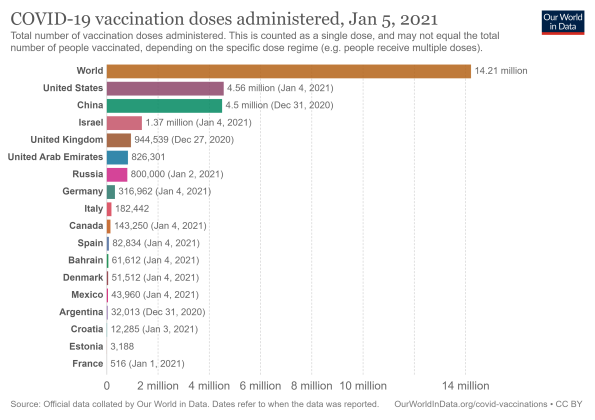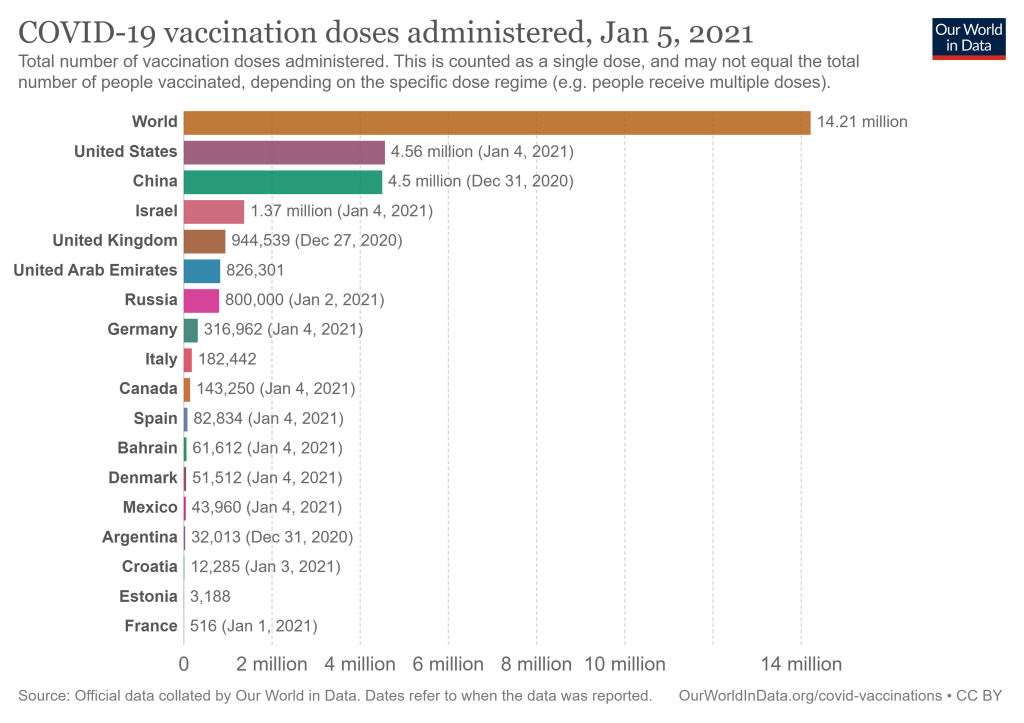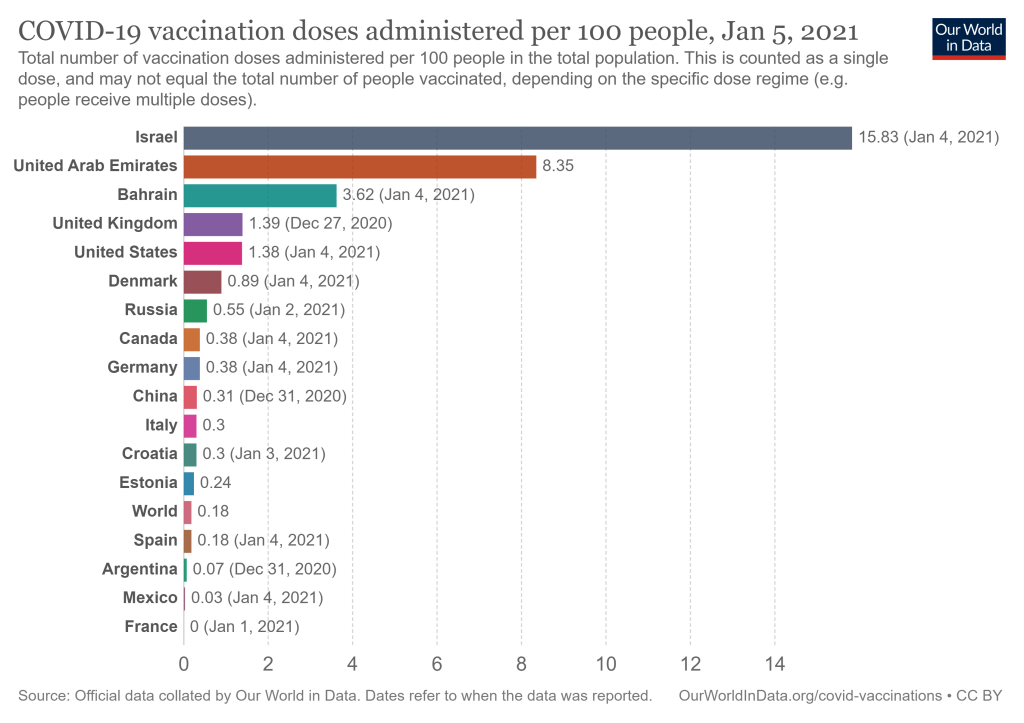
The Covid-19 vaccine rollout has been a lot slower than hoped. Health authorities predicted that about 20 million Americans would receive their first dose by the end of 2020, but here we are, five days after that, and the official numbers say that only 15.4 million doses have been distributed and, more importantly, only 4.6 million people have received the initial dose of the vaccine. Nevertheless, I think the vaccine rollout is going okay.
For one thing, the United States is doing well compared to other countries. In terms of the raw number of vaccine doses administered, we’re leading the world:

As with other Covid stats, that’s skewed by the fact that we are one of the larger countries. A more accurate picture is given using per-capita figures, but even there, we’ve got the fifth best dose administration rate:

Israel, the UAE, and Bahrain are small countries with simple healthcare systems, and the U.K had a bit of a head start, so we’re actually doing a relatively good job of getting the vaccine out.
I’m not bringing this up to brag about American exceptionalism — the United States has little to brag about when it comes to Covid-19 — but because it suggests that there isn’t anything unusually wrong with U.S. vaccine distribution. Everybody is having problems getting the vaccine out to the population. This suggests that the difficulties we’re having in the U.S. are not because the people running the distribution system are failing, but because the problem of rolling out a pandemic vaccine is harder than everybody thought it was.
That makes sense to me, because we’ve never distributed vaccines like this before. (Not lately, anyway.) Normally, we get vaccinations at our doctor’s offices, at walk-in clinics, or at pharmacies. The Covid-19 vaccine doses are being given out to hospital staff at hospitals and nursing home residents in nursing homes, and that’s a logistics chain we’ve never used before. We shouldn’t be surprised that it’s going slowly, because we’re still learning how administer a vaccine that way, and it may simply be harder to do for a variety of administrative and practical reasons.
I suspect that once the general rollout starts, and vaccine doses are distributed through normal and well-understood logistics channels, a lot of people will be vaccinated very quickly.
In fact, my gut feeling (and I could certainly be wrong) is that since we are producing vaccine doses faster than we can get them to high-priority recipients, which leaves us with a significant stockpile of doses, it might make sense to start the general vaccine rollout right now, simply to get the vaccine out to as many people as possible as fast as possible.

Leave a Reply